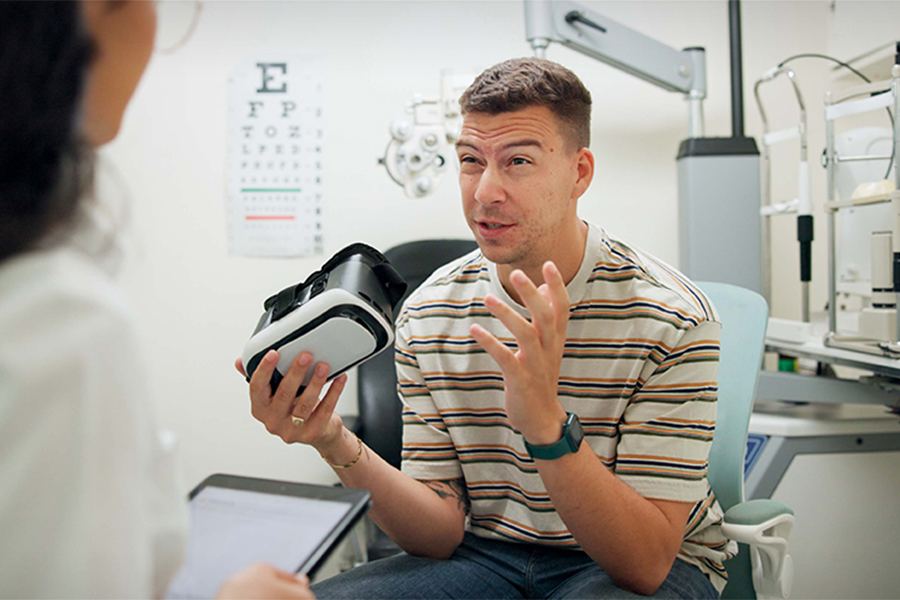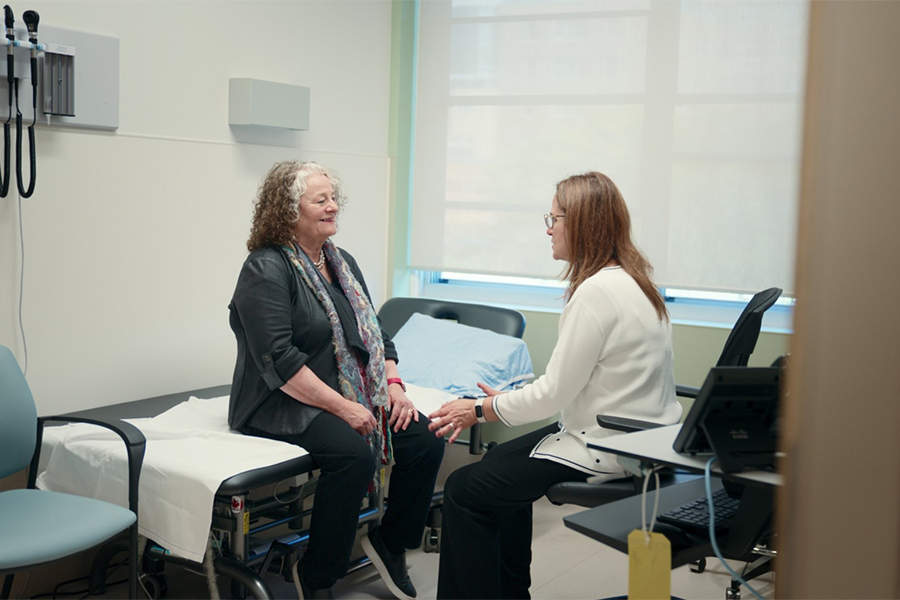
A brain injury can change everything. For the 1.5 million people in Canada living with an acquired brain injury, its “invisibility” can add to the challenge.
What is an acquired brain injury?
Acquired brain injuries – which are any brain injuries that occur after birth – can have a range of causes including head injuries, strokes, tumours and infections. Their impact can vary depending on the injury’s severity and the part of the brain that is affected, among other factors.
The consequences of brain injury may be temporary or permanent, and can cause challenges in one or more of the following areas:
- Cognitive impairments like memory issues, problems with speech and language communication, attention and concentration, and reasoning
- Emotional regulation challenges like mood swings or impulsivity
- Social or psychosocial difficulties like strained relationships with peers and family, as well as in employment and educational settings and isolation
- Neurological impairments like difficulty with ambulation (movement), balance, seeing and hearing, or sensory sensitivities
According to Dr. Tatyana Mollayeva, Scientist, Toronto Rehab and KITE Research Institute at UHN, “The impact on a person’s daily functioning, health and interpersonal relationships can be profound.”

The challenges of an “invisible disability”
While brain injury can significantly affect a person’s daily life, it’s possible the people they interact with – from neighbours and grocery store clerks, even to their family doctor – would not be able to recognize they have a disability. It is what is called an “invisible disability.”
Acquired brain injury can be invisible even in the health care system, especially when the injury is difficult to detect on scans or when symptoms develop long after the injury. Dr. Mollayeva says, “Cognitive, emotional and behavioural changes stemming from acquired brain injury can be misattributed to other conditions such as dementia, personality disorder, anger management problems or impulsivity.”
Because it is invisible, the impacts of brain injury can often be misinterpreted in a person’s daily life. A person forgetting about a meeting, struggling to interpret social cues or experiencing mood swings resulting from a brain injury could often be misunderstood by others as being rude, awkward or overly sensitive. This can cause strain to interpersonal relationships, and put the person with a brain injury at risk of social isolation. Depending on their personal circumstances and support networks, the impacts can be even more profound.

Dr. Vincy Chan, Scientist, Toronto Rehab and KITE Research Institute, recalls a person who was involved in the criminal legal system. As a result of their brain injury, they had difficulty with comprehension, memory and communication, as well as hearing difficulties that caused them to speak at a loud volume. They struggled to understand and follow instructions.
No one around them understood that these behaviours arose from symptoms of a brain injury, and the person was treated as defiant and uncooperative despite their best intentions. This in turn affected how others treated them, especially given their position in the criminal legal system where behaviour is often closely monitored and controlled.
For this person and for many people living with brain injury, their invisible disability means that not only do they not receive accommodations that could help them cope, but the symptoms they experience can lead to stigma and social judgement.
Reimagining care for people with acquired brain injury
Teams in UHN’s Krembil Brain Institute, Toronto Rehab and KITE Research Institute are working hard to combat brain injury’s invisibility, in health care and society at large.
One of the keys is to raise awareness.
This includes enhancing education and clinical guidelines around brain injury to equip more care providers with knowledge about brain injury, to consider it as a possible explanation for a patient’s behaviours, and to implement simple accommodations that could drastically improve care outcomes.
“We’re not talking about huge system change, but making small accommodations to support someone who has a brain injury,” says Dr. Chan. “These are some simple strategies to increase the quality of care that they may receive, or even to ensure that they receive the care.”
For example, a person with a brain injury who is also undergoing cancer treatments could benefit enormously if their oncologist is aware of accommodations that could help them. If their injury impacts memory or comprehension, they might not understanding medication instructions or may forget about follow-up appointments. Accommodations like asking the patient to repeat the instructions to ensure they understand, or phoning them to remind them about appointments are simple to implement and lead to better care.
“It’s really just the recognition that most likely you are already treating or supporting someone with a brain injury,” says Dr. Chan. “It’s compassionate care – recognizing that if I make one small change, it might mean the world to someone.”

No one ever changed the world on their own but when the bright minds at UHN work together with donors we can redefine the world of health care together.


